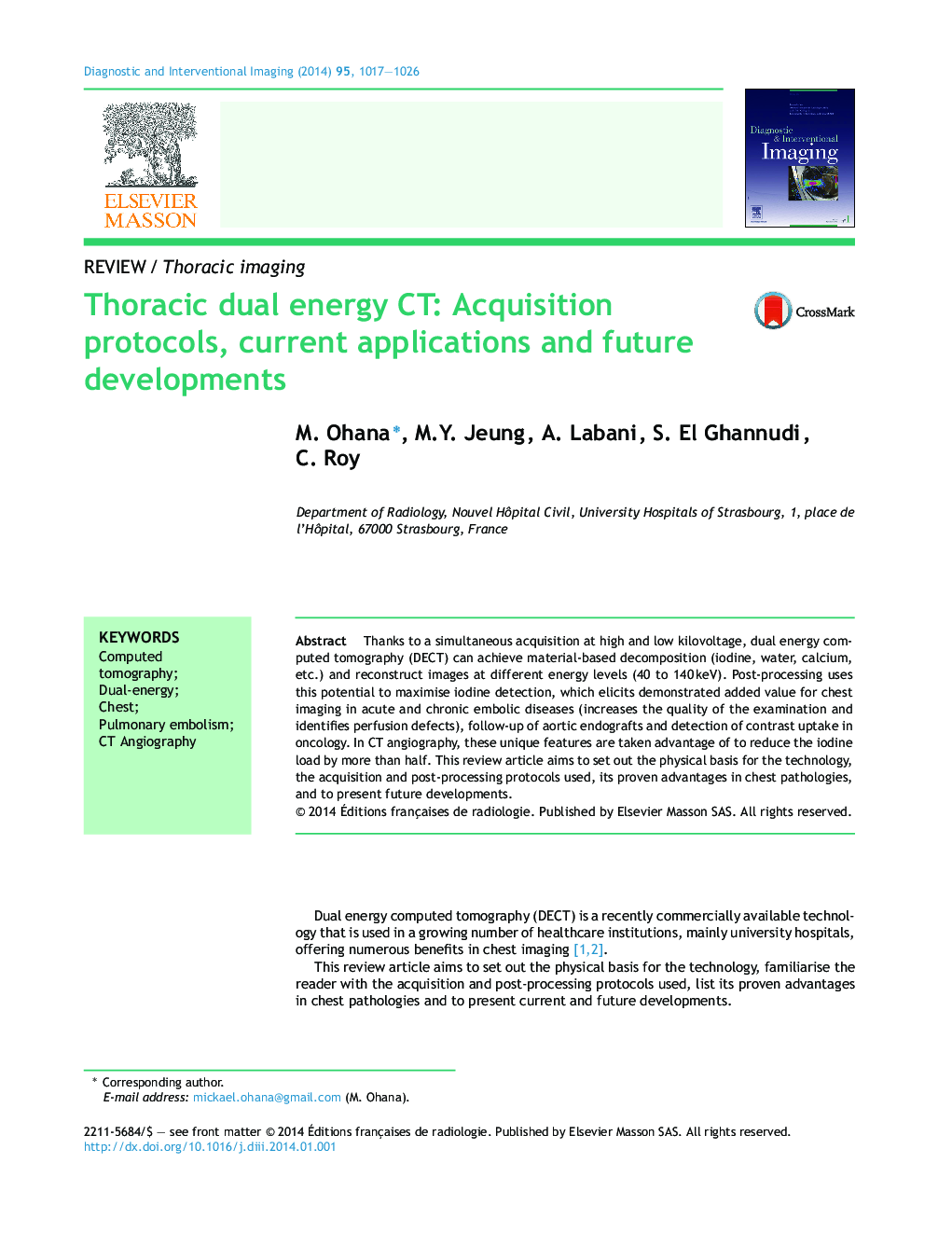| Article ID | Journal | Published Year | Pages | File Type |
|---|---|---|---|---|
| 2733756 | Diagnostic and Interventional Imaging | 2014 | 10 Pages |
Thanks to a simultaneous acquisition at high and low kilovoltage, dual energy computed tomography (DECT) can achieve material-based decomposition (iodine, water, calcium, etc.) and reconstruct images at different energy levels (40 to 140 keV). Post-processing uses this potential to maximise iodine detection, which elicits demonstrated added value for chest imaging in acute and chronic embolic diseases (increases the quality of the examination and identifies perfusion defects), follow-up of aortic endografts and detection of contrast uptake in oncology. In CT angiography, these unique features are taken advantage of to reduce the iodine load by more than half. This review article aims to set out the physical basis for the technology, the acquisition and post-processing protocols used, its proven advantages in chest pathologies, and to present future developments.
